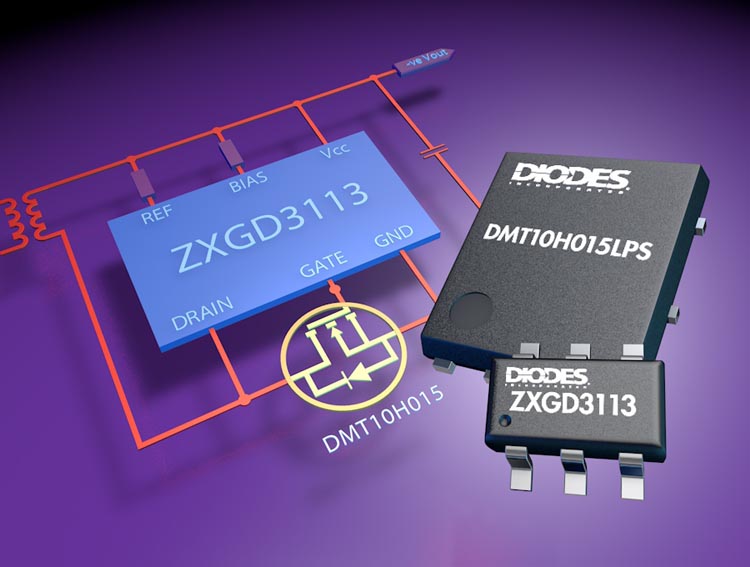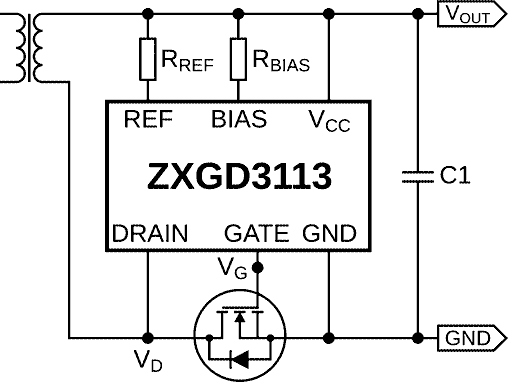Diodes Incorporated announced the ZXGD3113. This synchronous rectifier controller continues Diodes’ strategy to meet the industry-wide demand for increased power density and improved efficiency. When coupled with a MOSFET, the pairing can be used to replace lossy Schottky rectifiers in power supplies based on a flyback or resonant converter topology. The ZXGD3113 controls an external MOSFET, such as the 100 V 16 mΩ N-channel DMT10H015LPS, configured to operate as an ideal diode. Replacing a Schottky rectifier with the ZXGD3113 + MOSFET can significantly increase the efficiency of AC-DC power supplies targeting the industrial, consumer and telecommunications markets.

With improved efficiency, this negates the need for a heatsink to save space compared to a lossy Schottky rectifier. Furthermore, the smaller form-factor SOT26 reduces the solution size from the industry-standard SO8 and, by operating up to 250 kHz, the PSU designers can use smaller transformers, further saving space and BOM costs.
 |
| The ZXGD3113W6 Typical Configuration. |
Providing the control to a low RDS(on) MOSFET, the ZXGD3113 achieves greater efficiency by using proportional gate drive, enabling it to rapidly turn off the synchronous MOSFET when operating in continuous conduction mode (CCM), although it can also operate in discontinuous conduction mode (DCM) and critical conduction mode (CrCM). Other features include a low threshold voltage of less than 10 mV enabling the control of low RDS(on) MOSFET, and peak source/sink currents of 1.5/3 A, respectively, to support efficient driving of the synchronous MOSFET. A wide operating voltage of between 3.5 V to 40 V means the device can be driven directly by a PSU output as low as 3.5 V, while giving sufficient headroom to handle overvoltage spikes or operate at higher VCC rails such as 24 V.
